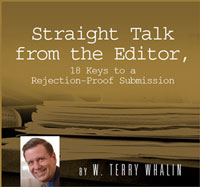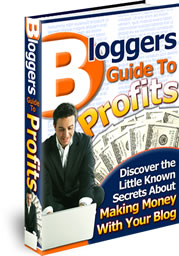Over the last few days, I’ve been giving you a glimpse into The Making of A Christian Bestseller by Ann Byle — which should be titled An Insider’s Guide to Christian Publishing—since there is almost zero about bestseller making. Even with a couple of caveats, the book has unique content from people who rarely write about the craft of writing or their work inside publishing so the book is well worth the time to study the contents and learn from it.
To help you see that unique content, I’m going to take one last look at some of the contents and include some quotations from specific chapters. While the topics of this entry will jump around, it will show the diversity and excellence of this book.
T. Davis Bunn
One of the more prolific and best-selling Christian fiction authors is T. Davis Bunn. Many years ago when his first book, The Presence, released, I was the first journalist to interview Davis and we’ve been in touch ever since that session. While Davis occasionally teaches at writers conferences, he has yet to put into print some of his teaching about fiction. How do I know? I’ve asked for it and come up empty handed. A chapter, The Christian Artist Davis Bunn, appears in Byle’s book. It looks at this topic but I’m going to focus on something unusual tucked into this chapter: “‘So can you have violence or sex without its being graphic or salacious? If yes, then I would say it’s something you can justify, particularly to draw a very clear moral,’ says Bunn. Swearing might be a different story, according to Bunn. Is swearing required from the standpoint of creating good art? Bunn recalls watching Good Will Hunting, a movie filled with swearing but with a strong moral point. Bunn watched the original, then watched a version of the movie with all the swearing removed. Was it still as good a movie? Absolutely.”
“‘Dialogue up until the 1960s never had swear words,’ says Bunn. ‘Yet if you read Hemingway, Dickens, or Faulkner, the evil characters they created speak cleanly yet are dark and live forever as timeless, powerful characters. I think that can be true today. It’s certainly easier to write a bad character if he uses foul words, but bad language doesn’t necessarily make him a stronger bad character.’”
Jerry B. Jenkins
I know Jerry has a writing book which will soon release from Writer’s Digest Books. I saw an advanced review copy from someone else at the Blue Ridge Conference. Byle worked with Jenkins at Moody Press for a season and includes a chapter, Living Real at the Top, which is written in a Q & A format. I’m going to highlight one question:
“Question: What goals have you set for yourself regarding your writing?”
“Jerry: I don’t sing or dance or preach; this is all I do. I want to be selective about the projects I take on and give them everything I’ve got, continuing to strive for excellence and to learn and grow. I don’t expect lightning to strike twice in my life, so I have to deal with the fact that even great sales will look disappointing when compared to those of Left Behind. I have to remind myself that I am not responsible for that side of it. My job is to produce the most readable copy I can, trusting God to help me make the most of what he’s given me.”
Jack Cavanaugh
Award-winning novelist Jack Cavanaugh is also included with a chapter, Dissecting the Christian Novel. Jack is one of the authors I’ve acquired for Howard Books and this entire chapter is excellent. Here’s one small portion:
“’Our goal as Christian writers should be to have our books still in print several generations from now,’ says Cavanaugh, ‘so we need to read, read, read and write, write, write. Write every day. I mean, write! Researching is not writing. Going to a writers’ conference is not writing. Talking about writing is not writing. There is no substitute for putting words on a page.’”
Jeanette Thomason
I’ve been crossing paths with Jeanette Thomason for many years—since we were both magazine editors with the Evangelical Press Association. Byle talks with Thomason about the process of acquisition for books in a chapter, Searching Out the Best Writers. During the creation of this book, Thomason left her acquisitions role at Revell Books and is currently the Editorial Director at Waterbrook Press. I was interested to see how Thomason talked about the process of locating authors:
“‘Part of what we do in acquisitions is science and part of it is magic,’ she says with a laugh. The science is looking at the craft: point of view, dialogue, active or passive voice, how the story moves, the message. The magic is intuition: talent, what makes a good story, what makes a good storyteller. Thomason guesses the ratio may be half science, half magic.”
“‘There’s also the element of creating a great book and doing all the right marketing, but the book doesn’t sell. Or you can put a book out there with very little marketing but something happens—the magic part—and the book starts spreading like wildfire,’ she says. Understanding the magic: also means understanding trends, where an author fits in culture and history, and what’s important to readers. It’s an iffy business to be sure.”
“‘I have really good days and really bad days,’ she says.”
Doesn’t this last quotation have a solid ring of truth to it? There are many other excellent sections to quote but I’m going to leave the rest to your own reading and imagination. With over 30 different voices, there is something for every type of writer.
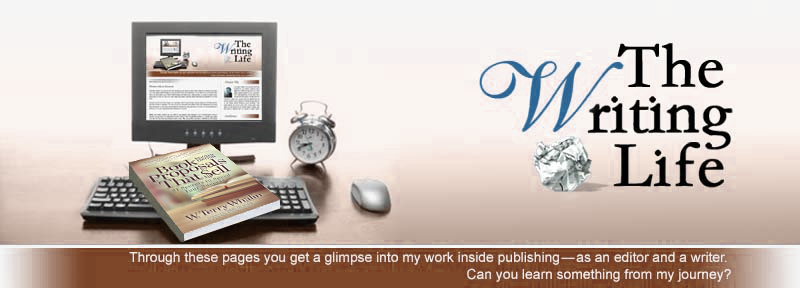

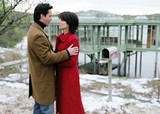


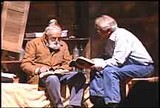 This week I spent a full day interviewing a well-known leader in a Christian ministry. Our time together marked the beginning stages of a book project which I will be writing over the next few weeks. Through the years, I’ve conducted a number of these types of intense sessions. It’s like an interview marathon where instead of a 30–minute interview or an hour long
This week I spent a full day interviewing a well-known leader in a Christian ministry. Our time together marked the beginning stages of a book project which I will be writing over the next few weeks. Through the years, I’ve conducted a number of these types of intense sessions. It’s like an interview marathon where instead of a 30–minute interview or an hour long 
 Long ago I learned in general there are two types of writers. One writer will wait for inspiration to strike. When it hits, this writer will crank out
Long ago I learned in general there are two types of writers. One writer will wait for inspiration to strike. When it hits, this writer will crank out  Here’s a couple of paragraphs from Thomas Mallon’s well-written article to show the connection of these authors, “Growing up, she had preferred tackle to touch football, and tended to bully her friends, including the young Truman Capote, who, during the late nineteen-twenties and the thirties, was fobbed off by his feckless mother on relatives who lived in Lee’s home town, Monroeville. He put her into his fiction at least twice—as Idabel Tompkins (“I want so much to be a boy”), in “Other Voices, Other Rooms,” and as Ann (Jumbo) Finchburg, in “The Thanksgiving Visitor.” Lee did the same for him in “To Kill a Mockingbird,” turning the boy Truman into Dill, an effeminate schemer with an enormous capacity for lying. One year, Lee’s father gave her and Truman a twenty-pound Underwood typewriter, which the two children managed to shift back and forth between their houses and use in the composition of collaborative fictions about the neighbors.”
Here’s a couple of paragraphs from Thomas Mallon’s well-written article to show the connection of these authors, “Growing up, she had preferred tackle to touch football, and tended to bully her friends, including the young Truman Capote, who, during the late nineteen-twenties and the thirties, was fobbed off by his feckless mother on relatives who lived in Lee’s home town, Monroeville. He put her into his fiction at least twice—as Idabel Tompkins (“I want so much to be a boy”), in “Other Voices, Other Rooms,” and as Ann (Jumbo) Finchburg, in “The Thanksgiving Visitor.” Lee did the same for him in “To Kill a Mockingbird,” turning the boy Truman into Dill, an effeminate schemer with an enormous capacity for lying. One year, Lee’s father gave her and Truman a twenty-pound Underwood typewriter, which the two children managed to shift back and forth between their houses and use in the composition of collaborative fictions about the neighbors.”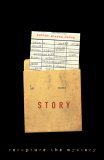



 Last year, I tried a different airline when I booked my ticket from Phoenix to Denver for the
Last year, I tried a different airline when I booked my ticket from Phoenix to Denver for the 

